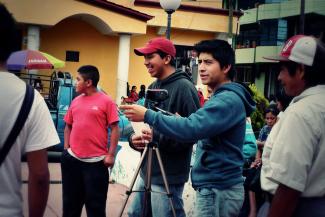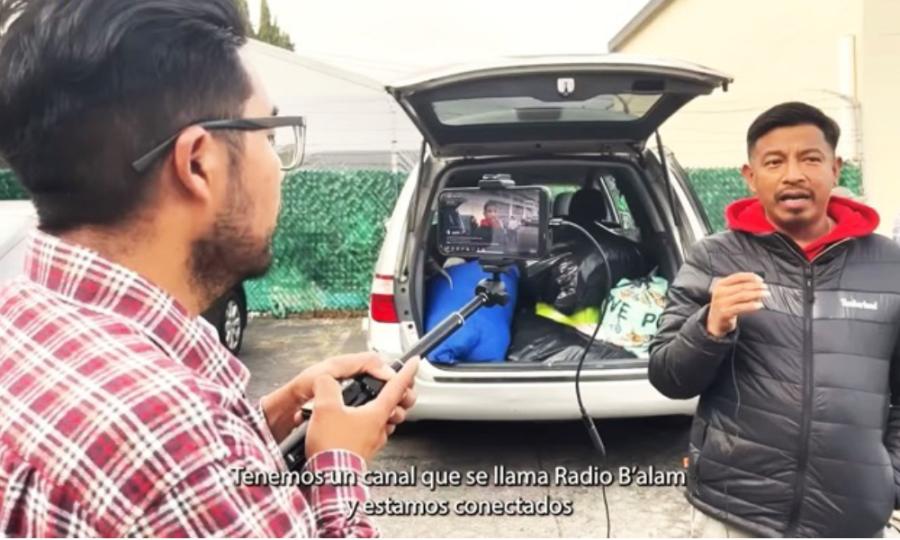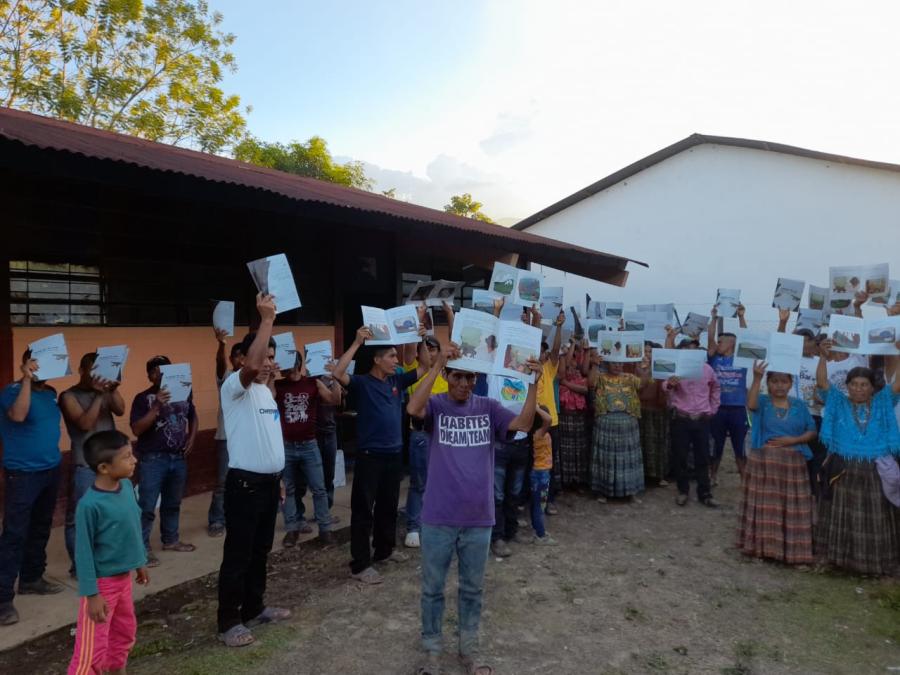The recent uprisings in the Middle East, dubbed “The Arab Spring,” have not only been a political revolution, but also a media one. The uprisings have shown the world how media technology can grant voice and power to ordinary people. As cameras get smaller and cheaper, and internet access broadens, this revolution is destined to expand.
At the invitation of Cultural Survival’s Community Radio Project, I flew from London to Guatemala to work with Mayan communities. Accompanying me was filmmaker and teacher, Karin Stowe. We were going to ensure that the Indigenous people of Quetzaltenango would not only be heard, but be seen, as well. Cultural Survival and Citizen Camera, a media empowerment organization based in the United Kingdom, believe that the Indigenous or ‘local’ voices should not only be heard in times of change and violence, but on a dayto- day basis. Ordinary people should have the opportunities and skills to create high-end news and documentary films, thus making the content more accessible and engaging for local and global audiences.
Arriving in Guatemala City, one is immediately assailed by the discord and paradoxes of a city subsumed by a conflicted identity. Western and local billboards collide beneath a towering metropolis that attempts to veil areas of extreme poverty, depravation, and violence. Colorful buses punctured with bullet holes pass old colonial and modern office blocks fighting for space; Guatemala is still a country embodying great tensions. We traveled by bus, loaded down with a bag full of cameras. As we made our way from the main city towards Quetzaltenango (Xela), the landscape began to change. Lush farmlands and mountains took us above the clouds to winter-like temperatures, and then, in just moments, we plummeted back down to tropical, humid climates.
As we peered out of the bus windows, we could see the colorful dresses of the Maya women; their intricately woven fabrics changed from one location to the next. We arrived in rainy Xela, tired and jet lagged.
The Mayan community within Guatemala has kept its culture intact through 500 years of colonialism, brutal repression and, most recently, 36 years of genocide that killed an estimated 200,000 Maya. Unlike the situation in the Middle East where globalization has helped, here, it is virtually destroying the Maya. With digital technologies mainly in the hands of the non-Indigenous majority, mainstream Western entertainment is now flooding Guatemala’s airwaves. Entertainment, as it is broadcast to the Indigenous people, encourages abandonment of Indigenous languages, clothing, spirituality, and identities.
Cultural Survival’s work in Guatemala helps stem this tidal wave of homogeneity with a network of tiny 500-watt radio stations, and dedicated volunteers who run them. Having been trained in radio production, script writing, and audio editing, these volunteers were primed to learn another skill— video production.
By empowering the radio station volunteers with camcorders and filming skills, we hoped to enable them to have a greater online voice. Carrying five camcorders, tripods, editing software, and visual guides, we approached the radio station. In a small concrete room, we set up a projector. Word quickly spread throughout the community, and participants began flooding in.
We handed out guidebooks and an outline of the week, which would include workshops and filming. The culmination of the week’s sessions would be a formal screening. Most of the participants had never used a camcorder before, so there was understandable shock at the thought of having complete films at the end of the week.
We had a lot of information to get through, but by the end of the first day, the volunteers were versed in professional techniques and terms. Everyone was happily exhausted. What I love about working abroad is seeing the slight differences that cultural backgrounds can have on both our teaching and another culture’s perception of film. After a few days, the participants had been introduced to all the technical elements
of filming; they knew their cameras, tripods, batteries, and memory cards. They knew how to pan, tilt, zoom, control
sound, and edit. They were talking and acting like filmmakers,
and it was important to us that all the learning was
professionally pitched so they might have solid grounding
for future employment opportunities.
The participant’s enthusiasm was contagious and our one-hour lunch breaks became extensions of the class. Questions and debates flourished. Conversations about families, cultural differences, and ideologies flowed freely. To me, this aspect of the workshop was important to the project because it generated mutual understanding and awareness. These interactions fed into class and created more confidence during debates on topics and issues that otherwise might have been difficult to articulate.
We knew we were there to empower the participants to make their own decisions; we were careful not to intervene or influence too much. They were encouraged to develop all their creative decisions and to add their own signature, style, and angle to their self-chosen film subjects (which included crop growing and the environment). After their first independent shoots, the participants came back with smiles and stories of things that went well, and things that didn’t.
They began editing their documentaries aware that the screening deadline was only two days away. They discussed shots, argued about cutaways, and propped themselves up with coffee—global norms for the editing room and a great sign. A healthy atmosphere of competition developed between the groups and the pressure was on. We got wind that the local TV stations would be covering the screenings and the local communities and families had been invited to attend —it was going to be a massive and very exciting event.
Screening day arrived and Karin and I got to the station early, but the teams were nowhere to be seen. They had spent the night editing and re-editing, perfecting their fades, dips, and captions. They eventually staggered in, blurry-eyed, but excited about the day ahead. The teaching space was transformed to a mini cinema and fragrant pine branches were laid out on the floor—a tradition in Mayan culture at important gatherings. Families and local press trickled in, music was played, national anthems were sung and speeches were delivered. The final event was the screening of the films. Created in just a few days by people who had mostly never used a camera before, the films were spectacular. They were professional, informative, and creative, and most important, they depicted an Indigenous perspective on local events and culture. The audience discussed issues and watched intently, clapping and laughing; some of the participants filmed the day’s events. So enthusiastic had the participants become about filming, they could not put the cameras down.
When our work was finished, we gave the community all of our cameras, guidebooks, and software. [Using Citizen Camera workshops as a base, Cultural Survival is now partnering with another organization to launch a long-term video training program for the participants.] Another filmmaker from neighboring El Salvador continues to work with radio volunteers from San Mateo to develop their knowledge.
Hopefully, with programs such as this, Indigenous communities can represent themselves continually, and the prejudices of Western representation can be lessened.



